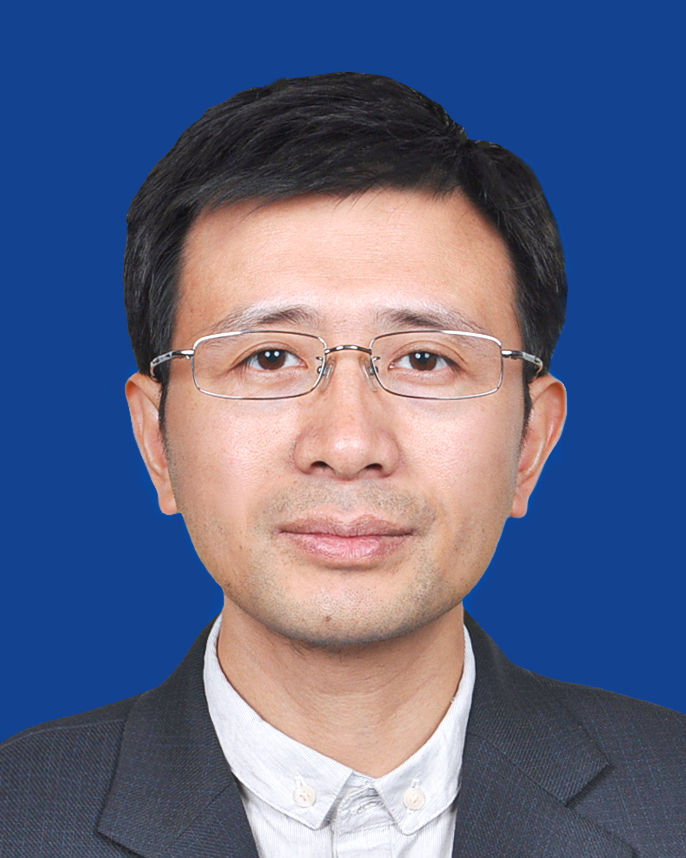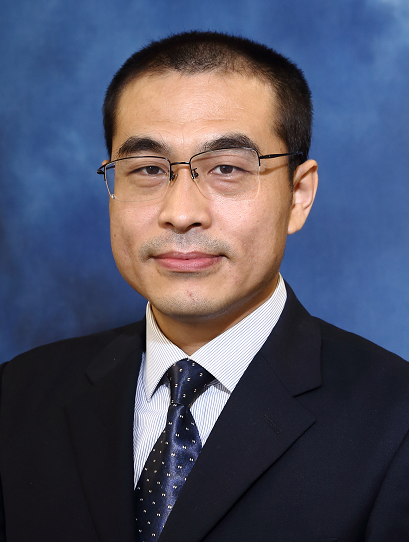
Prof. Jian Huang
Chair, Department of Intelligent Science and Technology
School of Artificial Intelligence and Automation
Huazhong University of Science and Technology (HUST), China
Biography: Jian Huang graduated from Huazhong University of Science and Technology (HUST), China in 1997 and received the Master of Engineering degree from HUST in 2000. He received his Ph.D from HUST in 2005. From 2006 to 2008, he was a postdoctoral researcher in the Department of Micro-Nano System Engineering and Department of Mechano-Informatics and Systems, Nagoya University, Japan. In 2015, he is also awarded a JSPS Invitation Fellowship working in Nagoya University. He is currently a full professor with the School of Artificial Intelligence and Automation, HUST. He is also a guest professor in Nagoya University of Japan and University Paris-Est Créteil (UPEC) of France. His main research interests include rehabilitation robot, robotic assembly, networked control systems and bioinformatics.
He is an IEEE Senior Member and has published more than 300 research papers (including more than 120 SCI-indexed journal papers) in some academic journals and conferences. He is currently an Associate Editor of IEEE Transactions on Fuzzy Systems, IEEE Transactions on Automation Science and Engineering, Cyborg and Bionic Systems, an editor of ROBOMECH Journal – Springer.
Speech Title: Wearable Robotics for Enhancing Human Abilities
Abstract: This report explores wearable assistive and augmented robotics through three innovative systems: (1) A supernumerary robotic limb (SRL) optimized for grasping, walking, and sit-to-stand assistance, demonstrating 7.2% higher grasping success, 12.7% reduced muscle activity during walking, and 25.1% improved sit-to-stand efficiency through multi-objective design; (2) An active suspended backpack incorporating bio-inspired vibration isolation and elastic actuation to redistribute loads from shoulders to pelvis, significantly reducing shoulder pressure while improving metabolic efficiency across terrains; (3) A wearable centaur robot featuring transformable wheel-leg mechanisms that seamlessly switch between efficient wheeled transport and stable legged locomotion, enabled by a unified control framework integrating admittance-based speed control and Bézier-trajectory planning for adaptive terrain negotiation. Together, these systems showcase the transformative potential of wearable robotics in enhancing human mobility, reducing physical strain, and adapting to diverse real-world challenges within a unified technological paradigm.

Prof. Carlos M. Travieso-González
University of Las Palmas de Gran Canaria, Spain
Biography: Carlos M. Travieso-González received an M.Sc. degree in 1997 in Telecommunication Engineering at the Polytechnic University of Catalonia (UPC), Spain; and a Ph.D. degree in 2002 at the University of Las Palmas de Gran Canaria (ULPGC-Spain). He is a Full Professor and Head of the Signals and Communications Department at the University of Las Palmas de Gran Canaria (ULPGC). He has been a faculty member at ULPGC since 2001, teaching signal processing, biomedicine, pattern recognition, and learning theory. His research interests encompass biometrics, biomedical signal and image processing, data mining, classification systems, machine learning, and environmental intelligence. He has researched in more than 50 International and Spanish Research Projects, some of them as head researcher. He is co-author of 4 books, co-editor of 25 Proceedings Books, and Guest Editor for eight JCR-ISI international journals and up to 24 book chapters. He has over 500 papers published in international journals and conferences (102 indexed on JCR – ISI - Web of Science). He has published 7 patents in the Spanish Patent and Trademark Office. He has been a supervisor on 13 PhD Thesis (8 more are under supervision) and 150 Master Thesis. He is the founder of The IEEE IWOBI conference series and President of its Steering Committee, The InnoEducaTIC conference series; and The APPIS conference series. He is an evaluator of project proposals for the European Union (H2020 and Horizon Europe), Medical Research Council (MRC – UK), Spanish Government (ANECA and AEI), Research National Agency (ANR – France), DAAD (Germany), The Ministry of Investments at Slovak Republic (MIRDI), Latvian Council of Science (LZP), Croatian Science Foundation (HRZZ), Slovenian Universities, Argentinian Government and Colombian Institutions. He has been a reviewer in different indexed international journals (<70) and conferences (<260) since 2001. He has been a member of the IASTED Technical Committee on Image Processing since 2007 and a member of the IASTED Technical Committee on Artificial Intelligence and Expert Systems since 2011. He will be APPIS 2026 General Chair, CAIP 2025 and was General Chair in APPIS 2025, APPIS 2024, APPIS 2023, APPIS 2022, APPIS 2020, IEEE-IWOBI 2020, APPIS 2019, IEEE-IWOBI 2019, IEEE-IWOBI 2018, APPIS 2018, InnoEducaTIC 2017, IEEE-IWOBI 2017, IEEE-IWOBI 2015, InnoEducaTIC 2014, IEEE-IWOBI 2014, IEEE-INES 2013, NoLISP 2011, JRBP 2012 and IEEE-ICCST 2005.

Prof. Guohui Tian
Shandong University, China
Biography: Guohui Tian received his B.S. degree from Department of Mathematics at Shandong University in 1990, M.S. degree from Department of Automation at Shandong University in 1993, and Doctor degree from School of Automation at Northeastern University in 1997. He also studied as a visiting professor in Tokyo University of Japan from 2003 to 2005. Concurrently, he is a professor in the School of Control Science and Engineering at Shandong University, and serves as the deputy director of the Intelligent Robot Professional Committee of the Chinese Association for Artificial Intelligence, a member of the Shandong Province Robot Development Expert Advisory Committee.
His research interests include service robot, intelligent space, cloud Robotics, embodied intelligence, et al. He is chiefly responsible for the national key R&D project and the National Natural Science Foundation key project, etc, has published more than 360 papers, won the first and second prizes of Science and Technology Progress Award of Shandong Province.
Speech Title: Environment Modeling of Household Service Robot for Domestic Tasks
Abstract: The research and application of household service robots is a strategic need for national scientific, technological, and social development. However, the openness and dynamic nature of the home environment significantly hinders robots from completing household tasks. To achieve high-quality, long-term, safe, and efficient household service, an environmental model is needed that enables robots to accurately perceive and deeply understand the service environment. In response to the demands of domestic tasks, this report focuses on enhancing the service capabilities of robots, and discusses the environmental modeling methods and related progress of service robots for domestic tasks. For safe robot navigation, a 2-D representation model for 3-D space obstacles is proposed. For robotic object search, a hybrid map is presented to improve object search efficiency. For robot manipulation tasks, a real-time local 3-D representation based on the 2-D environmental model is designed. For robots performing domestic tasks autonomously over long periods, a multi-level, multi-granular semantic model for long-term autonomy is proposed. Through the construction of environmental models, a new model of smart home life for robots can be realized with "safe obstacle avoidance, efficient search, effective operation, and long-term autonomy".

Prof. Liang Yan
Beihang University, China
Biography: Liang Yan is the Changjiang distinguished professor of Beihang University. His research interest is mainly on high-performance actuation and its applications in robotics and aerospace engineering. He has completed research projects funded by the Natural Science Foundation and the ministry of Science and Technology of China. The research achievement has been published on top journals and refereed conference, such TMech, TIE, TASE and etc. He is the Electrical Machine Committee Member of IEEE Industrial Electronics Society, the Robotics and Mechatronics Committee Member of IFToMM, and the Mechatronics Committee Member of Chinese Aeronautics Society.

Prof. Hongliang Ren
The Chinese University of Hong Kong, China
Biography: Professor Hongliang Ren received his Ph.D. in Electronic Engineering (Specialized in Biomedical Engineering) from The Chinese University of Hong Kong (CUHK) in 2008. He has been navigating his academic journey through Chinese University of Hong Kong, UC Berkeley, Johns Hopkins University, Children’s Hospital Boston, Harvard Medical School, Children’s National Medical Center, United States, and National University of Singapore. He has served as an Associate Editor for IEEE Transactions on Automation Science & Engineering (T-ASE) and Medical & Biological Engineering & Computing (MBEC). He has served as an active organizer and contributor on the committees of numerous robotics conferences, including a variety of roles in the flagship IEEE Conf. on Robotics and Automation (ICRA), IEEE Conf. on Intelligent Robots and Systems (IROS), as well as other domain conferences such as MICCAI/ROBIO/BIOROB/ICIA/CVPR. He served as publicity chair for ICRA 2017, concurrently as Organizing Chair for ICRA 2017 workshop on Surgical Robots, and video chair for ICRA 2021. He has delivered numerous invited keynotes/talks at flagship conferences/workshops at ICRA/IROS/ROBIO/MICCAI/CVPR/ICIA. He is the recipient of the National Science Fund for Distinguished Young Scholars (Category A), IFMBE/IAMBE Early Career Award 2018, Interstellar Early Career Investigator Award 2018, Health Longevity Catalyst Award (2022 by NAM & RGC), NUS Engineering Young Researcher Award (2019), Interstellar Early Career Investigator Award (2018), ICBHI (Biomedical and Health Informatics) Young Investigator Award (2019), NUS Young Investigator Award (2013), EMedic Global Gold Medal (2017) and Silver Medal (2021), Best Paper Awards in IEEE-ROBIO (2019 & 2013), IEEE-RCAR2016, IEEE-CCECE2015, IEEE-Cyber2014 among 30+ others awards.
Speech Title: Compliant Surgical Motion Generation and Perception Towards Intelligent Minimally Invasive Robotic Procedures
Abstract: Minimally Invasive Surgeries (MIS) emerging in modern medical treatment have brought new opportunities and challenges for procedure-specific surgical motion generation and the associated motion understanding, which are the foundation of intelligent robotic manipulation and guiding interventions. Image-guided robotic surgery is expected to increase the precision, flexibility, and repeatability of surgical procedures but poses challenges for system development. This talk will highlight our recent developments in dexterous robotic motion generation with motion perception towards intelligent image-guided minimally invasive procedures. The procedure-specific telerobotic surgical systems can assist surgeons in performing dexterous manipulations using continuum motion generation mechanisms with variable stiffness and context awareness.
